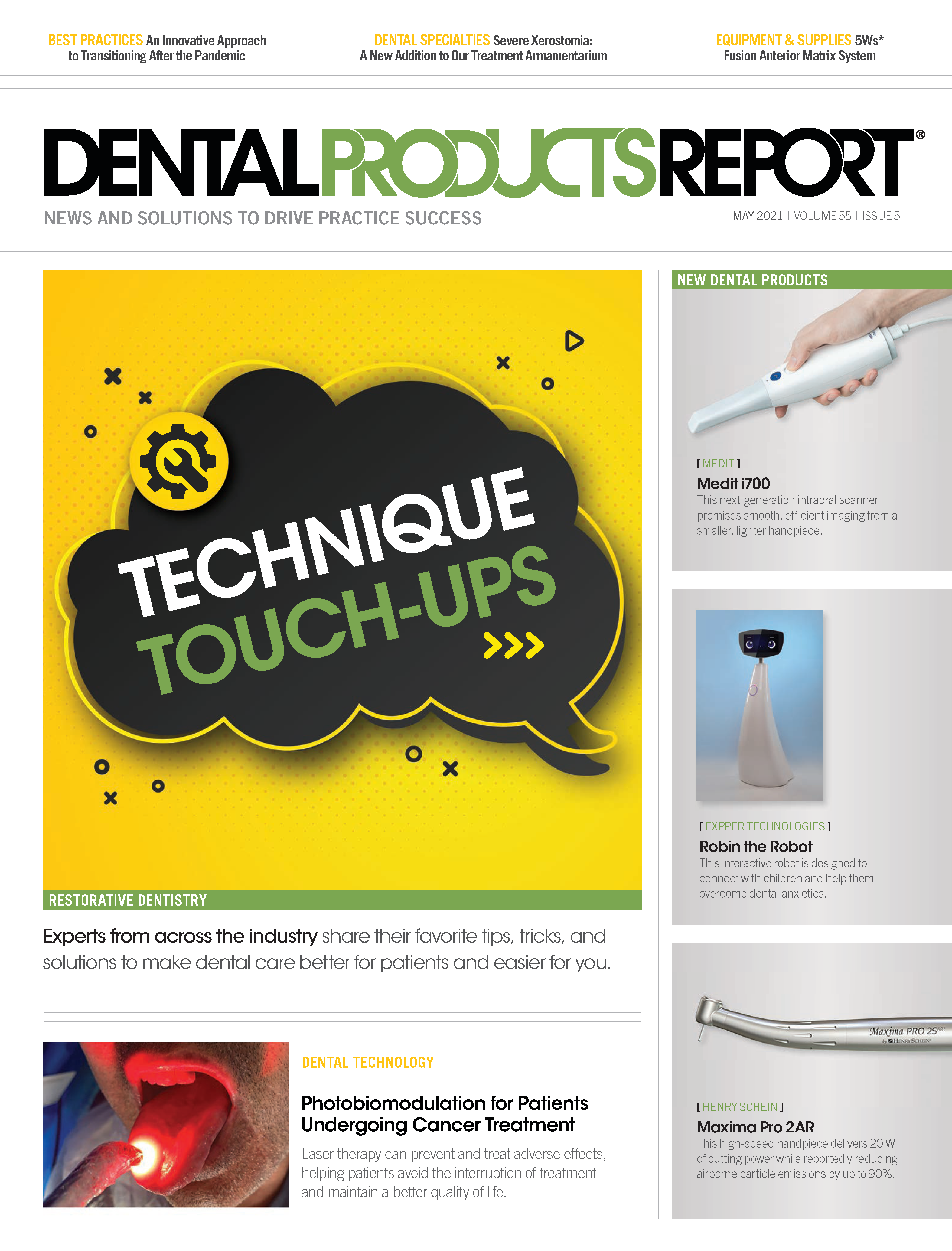5 Dental Restorative Materials Used Throughout the Ages
This month's The List is a quick look at some of the different materials used to fill cavities throughout the years.

People have attempted to prep and fill cavities to treat dental issues for thousands of years using a variety of dental materials, which have since come a long way. A success story of modern biomaterials research, today’s composite restorative materials are leaps and bounds ahead of some of the early methods that date back more than 13,000 years. What follows is a quick look at some of the different materials used to fill cavities throughout the years.
1. Bitumen
The earliest evidence of dental fillings dates back 13,000 years and was found in the remains of a person who lived in Riper Freidan (what is now Northern Italy). The discovery was first published in 2017, after researchers found human remains with sizable holes bored into the central incisors.
The holes showed marks indicating preparation with some kind of drill. Although the fillings were gone, there was evidence of bitumen, a natural tar-like substance, within the ancient preps, making this the first known dental filling material.1
2. Beeswax
The oldest known dental filling that left enough evidence to be studied dates back approximately 6500 years. A cracked canine tooth discovered in a cave near Trieste, Italy, was found to have a beeswax filling in 2012.2
Investigators were unable to determine whether the beeswax was used to seal the crack before or after the person’s death. Even if this was a postmortem filling, beeswax still qualifies as one of the oldest filling materials ever found.
3. Amalgam
Still in use today, amalgam dental fillings were first mentioned in the Chinese medical text “Xinxiu bencao” written by Su Gong in the year 659. That text described using an amalgam of tin and silver to fill dental cavities. Some records hint the material’s history might even date back somewhat further in China.
The first written formula for dental amalgam was published in China in 1505, and this recipe adds mercury to the tin and silver. The material was introduced to the US in 1833 by Edward Crawcour and his nephew, Moses Crawcour, and quickly grew in popularity before it was banned circa 1844 by the American Society of Dental Surgeons (ASDS) due to health concerns. The material returned to popular use after the ASDS was disbanded in 1856, and the American Dental Association was founded in 1859.3
4. Gold
The use of gold in dentistry dates back thousands of years, but the earliest uses were gold bands to hold teeth and replacement teeth in place rather than to fill cavities. Gold crowns can be traced back to the Etruscans and the year 201.4
However, the use of gold for dental fillings can only be traced back to the 1700s, when it began to be used for filling cavities across Europe. In 1855, the cohesive gold foil method was invented by Robert Arthur, making it easier than ever to fill cavities with this soft metal.
5. Composite
Modern dentists are more likely to look to a syringe or compule of resin composite when filling cavities today. These materials, which offer restorations colored like natural teeth, first arrived in the 1960s. Since then, the materials and techniques for placing them have evolved extensively. A wide range of composite systems is available, offering different physical properties, different curing parameters, and a variety of other options for clinicians. In recent years, these newer materials have become the constant focus of a great deal of research, with manufacturers striving to improve dental restoration performance by changing the initiation system, monomers, and fillers and their coupling agents and by developing new polymerization strategies.
References
1. Oxilia, G, Fiorillo, F, Boschin, F, et al. The dawn of dentistry in the late upper Paleolithic: An early case of pathological intervention at Riparo Fredian. Am J Phys Anthropol.2017; 163: 446– 461. https://doi.org/10.1002/ajpa.23216
2. Bernardini, F., Tuniz, C., Coppa, A., Mancini, L., Dreossi, D., Eichert, D., Turco, G., Biasotto, M., Terrasi, F., De Cesare, N., Hua, Q., Levchenko, V. Beeswax as Dental Filling on a Neolithic Human Tooth. Published: September 19, 2012; https://doi.org/10.1371/journal.pone.0044904
3. Bharti R, Wadhwani KK, Tikku AP, Chandra A. Dental amalgam: An update. J Conserv Dent. 2010;13(4):204-208. doi:10.4103/0972-0707.73380
4. ADA.org. History of Dentistry; https://www.ada.org/en/member-center/ada-library/dental-history. Accessed April 18, 2021.

Product Bites – November 10, 2023
November 10th 2023The weekly new products podcast from Dental Products Report is back. With a quick look at all of the newest dental product launches, Product Bites makes sure you don't miss the next innovation for your practice. This week's Product Bites podcast features new launches from Amann Girrbach, DMG, Pac-Dent, and ASI Dental Specialties. [4 Minutes]
ACTIVA BioACTIVE Bulk Flow Marks Pulpdent’s First Major Product Release in 4 Years
December 12th 2024Next-generation bulk-fill dental restorative raises the standard of care for bulk-fill procedures by providing natural remineralization support, while also overcoming current bulk-fill limitations.
Product Bites – October 27, 2023
October 27th 2023Product Bites makes sure you don't miss the next innovation for your practice. This week's Product Bites podcast features new launches from Kerr Dental, MGF, PreXion, ZimVie, Amann Girrbach, VOCO, ASI Dental Specialties, DMG, and NovoDynamics. [8 Minutes]